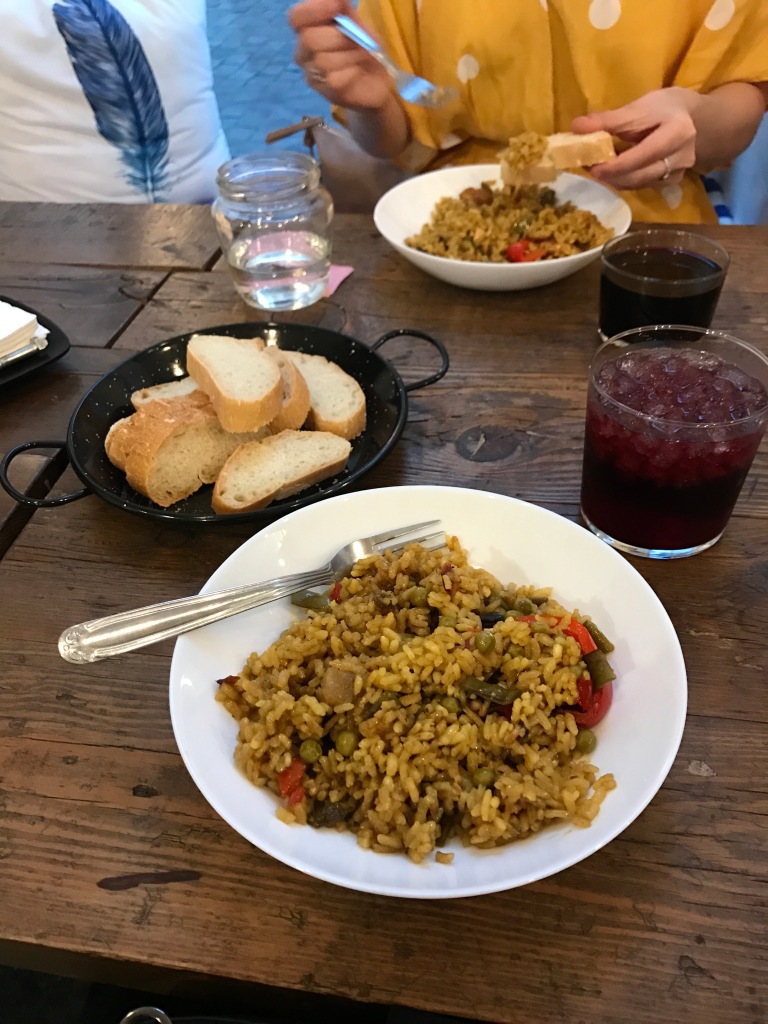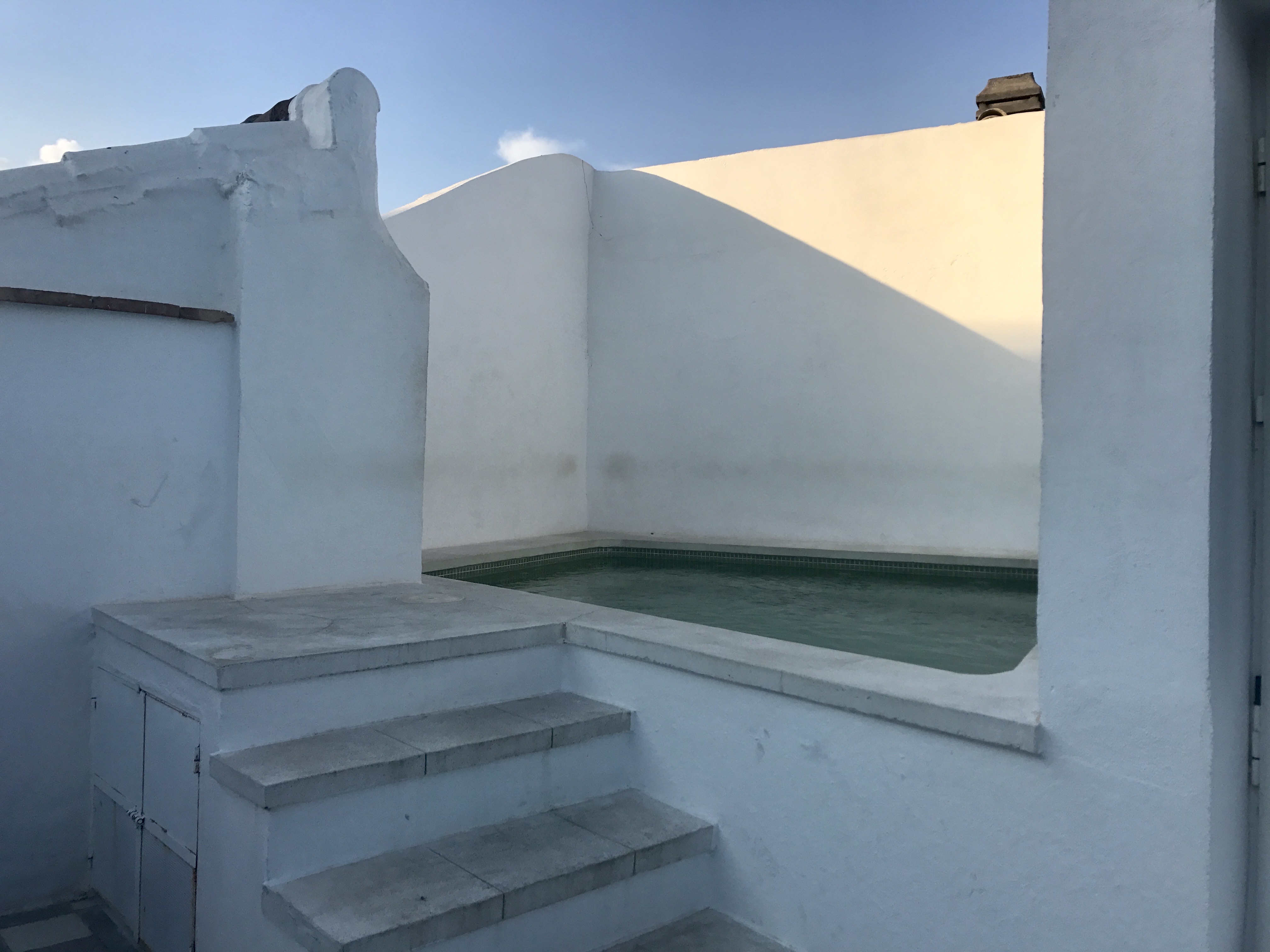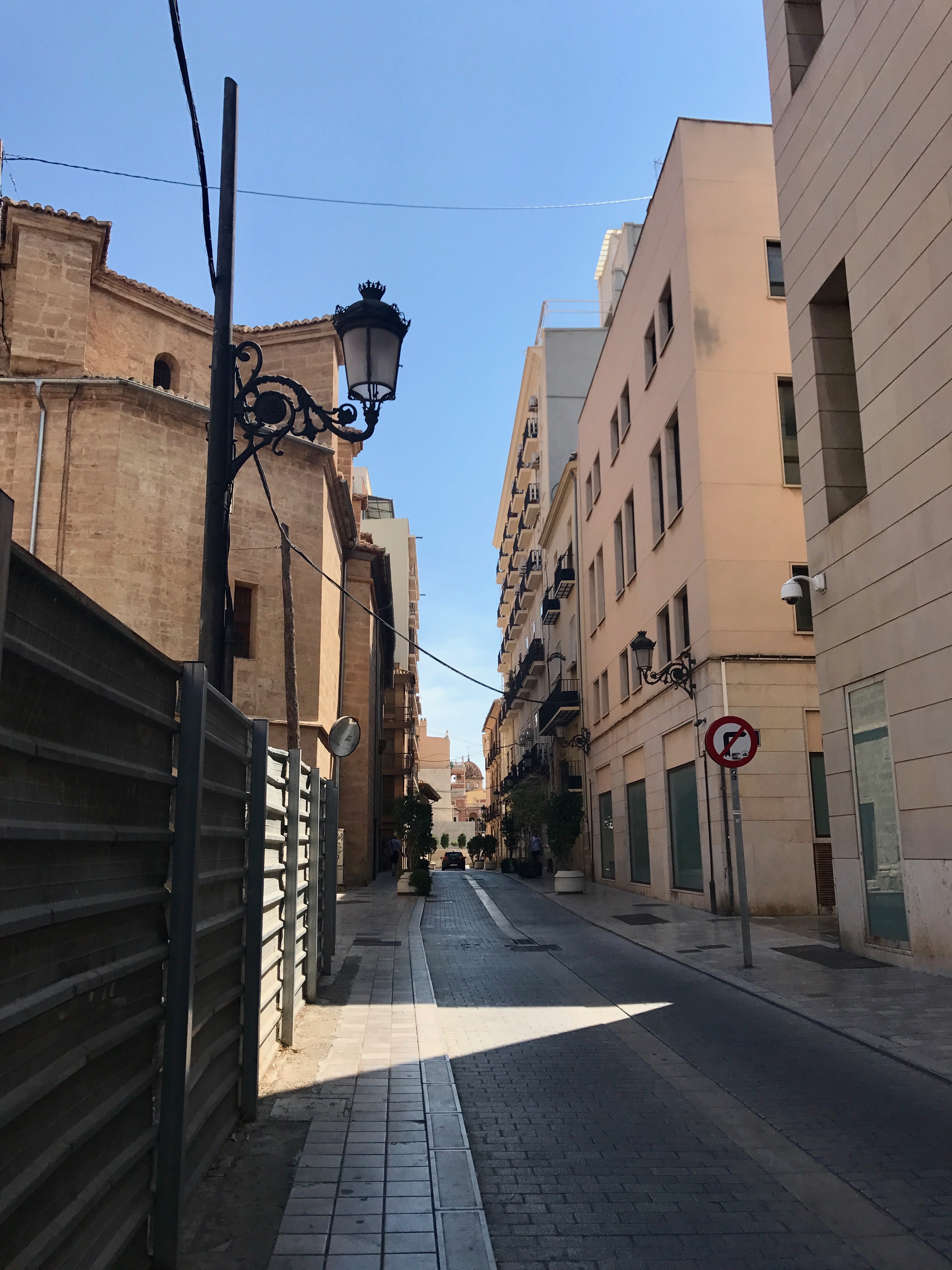21/08/18 to 23/08/18
Granada was where I was to stay the longest, a decision met with some surprise by those who rationalised that bigger, more prominent cities such as Barcelona or Madrid should instead merit such an honour. Yet, it was the city I found myself most curious about, swayed by tales of how travellers fell deeply in love with the city, and perhaps most of all by those who labelled Makuto Backpackers Hostel the best they’d ever stayed in.
I thus booked myself in for four nights – a sort of ‘rest stop’ at the approximate mid-point of my trip, if you will. I’d begun to feel the strain of packing my life into a backpack every few days, and the unwavering heat of Spanish summer was also beginning to wear me down.

I took a bus from Córdoba to Granada, as the terrain of the latter was too rocky and uneven to permit the construction of a trainline. After then catching a metropolitan bus from the bus terminal into the city centre, I found myself in direct line of the beating sun, planted in a main street that looked much more like a ‘city’ in the sense that I was familiar with, as compared to my prior destinations of Córdoba and Valencia.
Being not only unperturbed by but quite pleased at the prospect of long walks, I decided it would be no issue for me to walk the remainder of the way to my hostel, despite there being an additional bus I could catch to shorten this distance. I’d failed to predict, however, how ridiculously hilly the city would be – it comprised footpaths veering up and down, upon which I struggled to maintain my balance in my Birkenstocks while burdened by my backpack. Yet the city centre felt as flat as London in comparison to El Albaicín, the old Moorish quarter of the city within which Makuto Backpackers Hostel was nestled.

Once I made it to the hostel, red-faced and sporting a light sheen of perspiration, I was greeted by three girls dancing out in the courtyard who turned out to be hostel staff. I immediately understood what reviewers had meant when they’d described Makuto as ‘laid-back’ – it projected a decidedly hippy vibe, and maintained a strong smell of weed that permeated the common areas. In line with this, the staff were lovely, relaxed, and all ridiculously multilingual. I was to later learn that only few of them were Spanish natives (or native Spanish speakers, for that matter) – there was a German girl from Berlin who’d studied sign language in London and bore strong resemblance to a fairy, a Brazilian studying in France who was working here for the holidays, and a cute English boy from Southampton who pledged to never return to his home country, and who reminded me of an English boy I briefly dated in their shared love for Hawaiian shirts.
While checking in, I met another girl doing the same. Her name was Tania, she was from Germany, and I was to later learn that she was a physiotherapist. Not only did she speak English perfectly, but she also spoke fluent Spanish, as she aptly demonstrated by conducting her entire check-in in its staccato rhythms.
Later that night we took a sunset tour offered for free by the hostel, which rotated tours daily.

When we returned, there was still ample time before dinner – which is not to say that we returned early, as to have dinner before eight in Spain is nothing short of blasphemy. I settled myself at a table with some recent arrivals – a guy named Mitch from somewhere north of Perth, who was living in Tooting and working as a carpenter. He was accompanied by a German girl who later enthused about the flamenco show she’d just returned from, and with whom I had an engaging discussion about refugees at one in the morning. Then there was Max The Art Guy (he put himself as this in my phone), who always seemed to be wearing the same thing, and who appeared to have effectively taken up residence at the hostel. He did the chalk illustrations for the noticeboard, and had historically been more of a chef than an artist.
The next morning I made my way to the Alhambra, which is apparently the most visited tourist attraction in Spain. I’m recounting this entirely from memory, although I can’t exactly recall where I read this – I’d never actually heard of it prior to researching Granada, and even then, I’d only heard it mentioned in person by fellow travellers at Makuto.
I must acknowledge how lovely Alhambra was despite the kerfuffle that I now associate with it – a stunning example of Moorish architecture, reflecting the Arabic influences on the region that so clearly distinguished it from anywhere up north. Yet strongest in my memory is the frustration I felt in realising I’d failed to properly read the instructions on my ticket, which had issued me an entrance time. I’d taken heed of the warnings of internet forums of how strict these times were, but what I hadn’t noted was that the entrance time was listed for the Palacios Nazaríes (Nasrid Palaces), which was entirely on the other side of where I’d entered at the Puerta de la Justicia.

As I’d taken my time absorbing the views at the fortress, Alcazaba, I arrived at the palaces later than my selected time, and was curtly denied entry. I rather glumly wandered off to the expansive Generalife Gardens and Palace, my mind in a whir as to what I should do now that I’d missed out on seeing the main draw to the Alhambra itself. After spending the best part of an hour feeling wronged by the layout of the complex, I conceded that what had happened was entirely my fault, and that I would just have to cop buying another ticket. I was lucky enough to be able to get one for the next day, as the Alhambra is so often booked out in advance – for those of you looking to go, please be sure to not make the same mistake I did. The Alhambra really is quite confusing, so do look up a map of it online, and plan to be at the palaces at least half an hour before your entrance time.

When I got back to Makuto I was feeling rather down, and supposed that being social was better than slumping around by myself. I settled myself at a table in the courtyard, where I met Kathyrn and Keira. Kathryn was from Surrey, and had the kind of accent that was so unmistakeably English that it seeped into every language she spoke. She’d been working on a horse farm nearby, and was spending her last few days in Granada relaxing before returning home, and then later back to Edinburgh, where she was studying. Keira was from Sydney, and had been travelling for and indeterminate amount of time (by that I mean I can’t remember, but it must’ve been more than a year). I was convinced she had something going on with the cute staff member from Southampton, a suspicion bolstered the next night when they regaled us with the tale of how they were ambushed by police after climbing up to an apparently protected structure in the hills nearby.
I also met a woman from the north of Spain through Tania, who attempted to speak to me in rapid Spanish. I wish I could say that this went better than it did, but in reality it was a lot of her speaking, and me giving uncertain and often single-worded answers. I’m convinced that my comprehension of spoken Spanish was improved through her alone, and that my expectations about my ability to hold a conversation with a Spanish native dropped considerably.
Having so enjoyed the sunset tour the previous day, I signed up for the mirador (viewpoint) tour and attached paella night. Just prior to leaving, I bumped into two brothers from Toronto in the courtyard, who were ridiculously friendly (as apparently all Canadians are), and who reeled when I told them I’d planned my whole itinerary well in advance (‘you need to be a little spontaneous!’). I should note that the social atmosphere of the hostel was helped by you having to walk through the courtyard – the main common area – to get to your dorm, or the bathrooms. This meant that you were effectively forced into contact with others, and towards the end of my time in Granada, I seldom walked through it without bumping into someone I’d met before. That familiarity – however small – made me feel much more grounded than I had in previous hostels, and contributed to how at ease I felt throughout my time there.

I spent the bulk of the tour engaged in conversation with a half-Filipino Dutch boy, who was studying something related to peace (?), and who insisted on cooking every meal he ate while travelling. He voiced his displeasure to me that his hostel (Eco Hostel) didn’t actually have a kitchen, which would obviously make cooking quite difficult. I also met an Austrian guy around the same age as me, who was studying too, although I can’t recall what.
Besides my company, the mirador tour itself was nothing short of incredible. I’m convinced that it was both the number and quality of miradores scattered throughout el Albaicín that nurtured my love for viewpoints, turning the seedlings planted by los Bunkers de Barcelona into a fully-grown obsession.

There’s nothing quite like heights – something about expanses of land lain out before you, whether that be the rolling hills of the countryside as they stretch to sea, or the paint-stripped walls of houses in varying states of disrepair. Granada gave me tiled terracotta rooves, buildings that dutifully outlined the slopes of its terrain, and subtle signs of life – a shirt hanging out a window, washing lines flapping in the wind, a neat collection of plants lining a windowsill. Like many others, I find such panoramic views set against the backdrop of a sunset incomparable, yet there is also value in settling yourself in at a mirador at varying times of day. As day turns to dusk, and as dusk turns to night, the character of the city changes, and the bustle that accompanies Spanish nights makes its way to the surface.

At paella night, I found myself on a table with a girl from Brisbane (or somewhere near it), who was taking some time off her work in the medical field. She was leaving the next morning for a tour around Eastern Europe, for which she’d been rendered less anxious about by the ‘chill’ impression she’d gotten of her tourmates through the group chat the company had set up. I later found myself chatting to Mason, a guy from New Orleans who I remember by the Class of 2011 Columbia shirt he was wearing when we met.

When we returned to the hostel, we found ourselves amongst familiar faces in the courtyard. It was abuzz with conversation, and I found myself bouncing back and forth between the languages being spoken in an attempt to keep up with them all. As the night drew on, people began to make their way back to their own hostels and rooms, and the courtyard soon lay quiet.
The remainder of my time in Granada will be continued in a subsequent post.
Until next time,
x




























